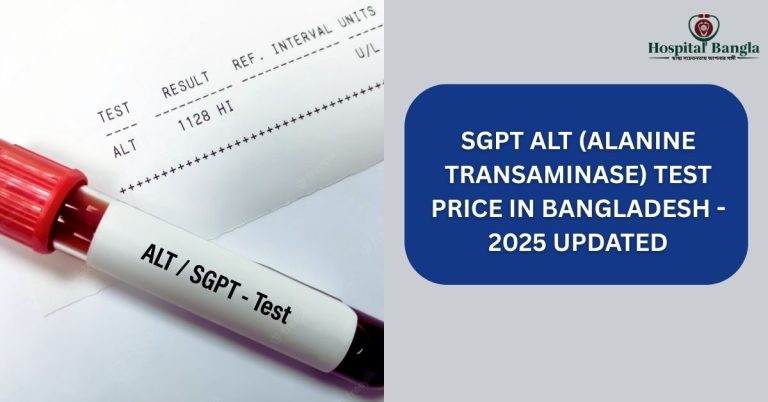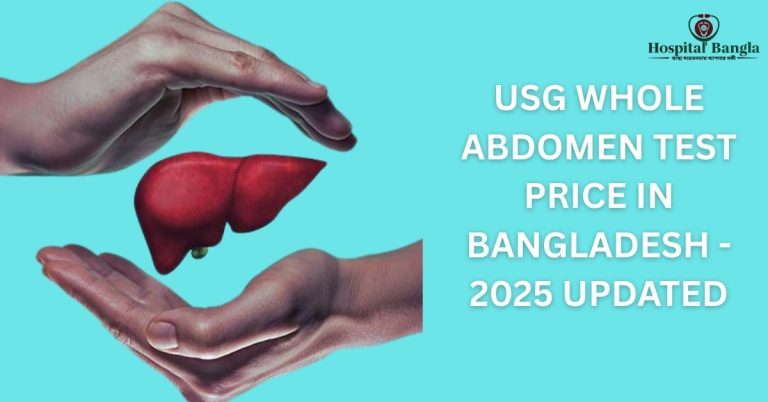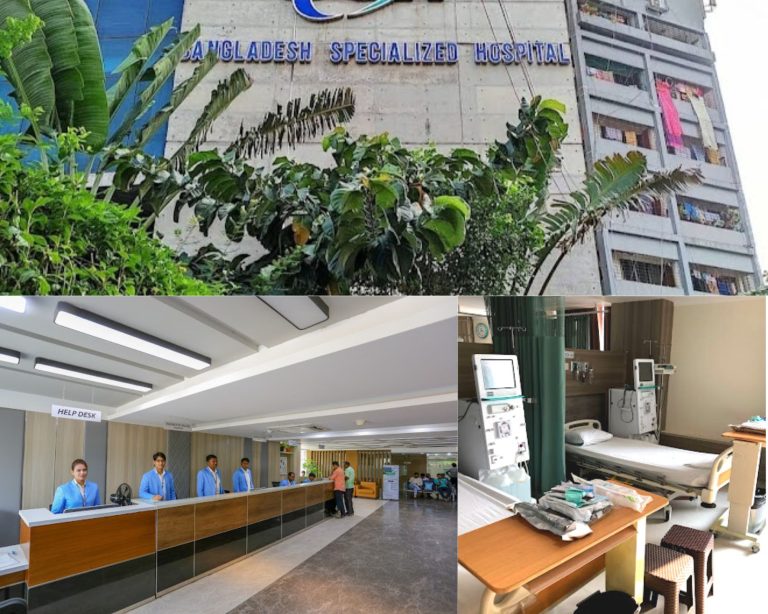OCT Eye Test Price in Bangladesh: 2025 Updated
An Optical Coherence Tomography (OCT) Eye Test is a non-invasive diagnostic procedure that captures high-resolution images of the retina, the light-sensitive layer at the back of your eye. This test is essential for detecting and managing eye conditions such as glaucoma, diabetic retinopathy, and age-related macular degeneration (AMD). If you’re experiencing symptoms like blurred vision or have risk factors such as diabetes, an OCT test can provide critical insights into your eye health. In Bangladesh, the OCT Eye Test Price in Bangladesh typically ranges from 3000 to 6000 BDT in private hospitals, with government facilities generally offering lower costs. This article provides a detailed overview of OCT tests, including their purpose, preparation, and pricing across major hospitals in Bangladesh for 2025.
What is an OCT Eye Test?
Optical Coherence Tomography (OCT) is an advanced imaging technique that uses light waves to produce detailed, cross-sectional images of the retina. Often referred to as a retinal OCT or eye OCT scan, it allows ophthalmologists to examine the retina’s layers with precision down to a few microns. This 3D visualization helps detect abnormalities like swelling, thinning, or fluid buildup, which are signs of eye diseases.
- What It Measures: OCT measures retinal thickness and identifies structural changes in the retina and optic nerve.
- Clinical Significance: It’s crucial for early diagnosis and monitoring of conditions like:
- Glaucoma: Thinning of the retinal nerve fiber layer.
- Diabetic Retinopathy: Swelling or fluid in the retina due to diabetes.
- Age-Related Macular Degeneration (AMD): Damage to the macula, affecting central vision.
- Alternative Names: Retinal OCT, OCT scan, or eye OCT.
By providing a virtual “biopsy” of the retina, OCT enables doctors to track disease progression and evaluate treatment effectiveness, making it a cornerstone of modern eye care.
When is an OCT Eye Test Recommended?
An OCT Eye Test is recommended in several scenarios, depending on symptoms, medical history, or ongoing treatment needs. Doctors use it for screening, diagnosis, and monitoring of eye conditions.
- Symptoms Warranting an OCT Test:
- Blurred or distorted vision.
- Floaters (dark spots or strings in your vision).
- Flashes of light.
- Sudden vision loss.
- Conditions Requiring OCT:
- Diabetes: To check for diabetic retinopathy or macular edema.
- Hypertension: To assess retinal damage from high blood pressure.
- Glaucoma: To monitor optic nerve and retinal nerve fiber layer health.
- Macular Degeneration: To detect changes in the macula.
- Retinal Detachment: To evaluate retinal tears or detachment.
- Use in Medical Practice:
- Screening: For at-risk individuals, such as those with a family history of eye diseases.
- Diagnosis: To confirm suspected retinal or optic nerve issues.
- Monitoring: To track treatment outcomes, such as injections for macular edema.
If you have any of these symptoms or conditions, consult an ophthalmologist to determine if an OCT test is necessary.
OCT Eye Test Preparation
Preparing for an OCT Eye Test is straightforward, as it’s a non-invasive procedure with minimal requirements.
- Fasting Requirements: None; you can eat and drink normally.
- Medications: No adjustments are typically needed, but inform your doctor about any medications.
- Sample Collection Process:
- You’ll sit in front of the OCT machine and rest your chin on a support.
- You’ll look at a target (e.g., a green light) while the machine scans your eye.
- The scan is contact-free, using light waves to capture images.
- Test Duration: The procedure takes 2–5 minutes per eye, depending on the equipment and your ability to stay still.
Patients may need to remove contact lenses to ensure clear images. If your pupils are dilated (using eye drops), you might experience temporary light sensitivity, so bring sunglasses for comfort afterward.
OCT Eye Test Price List in Government Hospitals in Bangladesh
Government hospitals in Bangladesh provide affordable eye care, including OCT tests, but exact prices are often not publicly listed. Below is a table of major government hospitals offering OCT services in 2025, based on available information:
| Hospital Name | Location | OCT Eye Test Price (BDT) | Contact Number |
|---|---|---|---|
| National Institute of Ophthalmology and Hospital | Dhaka | Contact hospital for price | NIOH Info |
| Chittagong Medical College Hospital | Chittagong | Contact hospital for price | Not available |
| Mymensingh Medical College Hospital | Mymensingh | Contact hospital for price | Not available |
| Rajshahi Medical College Hospital | Rajshahi | Contact hospital for price | Not available |
| Sylhet MAG Osmani Medical College Hospital | Sylhet | Contact hospital for price | Not available |
| Dhaka Medical College Hospital | Dhaka | Contact hospital for price | DMCH Website |
| Bangabandhu Sheikh Mujib Medical University (BSMMU) | Dhaka | Contact hospital for price | Not available |
Note: Prices in government hospitals are typically lower than in private facilities, often subsidized for low-income patients. Contact the hospitals directly for the most accurate pricing, as costs may vary based on equipment and patient eligibility.
OCT Eye Test Price List in Private Hospitals in Bangladesh
Private hospitals and diagnostic centers in Bangladesh offer OCT Eye Tests with modern equipment, but prices tend to be higher than in government facilities. Below is a table of prominent private hospitals offering OCT tests in 2025:
| Hospital/Diagnostic Center | Location | OCT Eye Test Price (BDT) | Contact Number |
|---|---|---|---|
| Mazharul Haque BNSB Eye Hospital | Dhaka | 3000 (single eye), 6000 (both eyes) | BNSB Website |
| Bangladesh Eye Hospital | Dhaka | Contact hospital for price | BEH Website |
| Vision Eye Hospital | Dhaka | Contact hospital for price | Vision Eye Website |
| Dhaka Eye Care Hospital | Dhaka | Contact hospital for price | DECH Website |
| Al Noor Eye Hospital | Dhaka | Contact hospital for price | Al Noor Website |
| Ispahani Islamia Eye Institute and Hospital | Dhaka | Contact hospital for price | Islamia Website |
| Popular Diagnostic Centre Ltd. | Dhaka | Contact hospital for price | Popular Diagnostic |
| Makka Eye Hospital Uttara Branch | Dhaka | Contact hospital for price | Makka Eye Website |
Note: Prices may vary depending on the hospital’s location, equipment, and whether a retina specialist interprets the results. For the latest pricing, contact the hospitals directly or visit their official websites.
Understanding OCT Eye Test Results
OCT Eye Test results provide a detailed view of your retina’s health, helping doctors diagnose and manage eye conditions.
- Normal Range: A normal OCT shows uniform retinal thickness with no signs of swelling, thinning, or fluid buildup. Specific measurements vary by equipment and patient age.
- Abnormal Results:
- Glaucoma: Thinning of the retinal nerve fiber layer or optic nerve damage.
- Diabetic Retinopathy: Fluid or swelling (edema) in the retina, especially the macula.
- Macular Degeneration: Drusen (yellow deposits) or macular thinning.
- Retinal Detachment: Separation of retinal layers.
- Factors Affecting Results:
- Poor scan quality due to eye movement or cataracts.
- Improper alignment during the test.
- Pre-existing eye conditions affecting image clarity.
- When to Consult a Doctor: If results show abnormalities, consult an ophthalmologist immediately. Even normal results should be reviewed with your doctor, especially if you have ongoing symptoms or risk factors.
Regular follow-up OCT tests may be needed to monitor changes over time, particularly for chronic conditions like glaucoma or diabetic retinopathy.
Frequently Asked Questions
How accurate is the OCT Eye Test?
OCT is highly accurate for detecting retinal and optic nerve abnormalities, with precision down to a few microns. However, results depend on scan quality and interpretation by a skilled ophthalmologist.
How long does it take to get OCT test results?
Results are typically available immediately after the test, as images are generated in real-time. Your doctor may discuss findings during the same visit or schedule a follow-up.
Is the OCT Eye Test covered by insurance in Bangladesh?
Insurance coverage varies by provider and plan. Some private insurance plans may cover OCT tests, but it’s best to check with your insurer or hospital.
How often should I get an OCT Eye Test?
Frequency depends on your eye health. For healthy individuals, an OCT may be part of routine check-ups every 1–2 years after age 40. For those with conditions like glaucoma or diabetes, tests may be needed every 6–12 months, as advised by your doctor.
How does an OCT test differ from a fundus photograph?
An OCT provides a 3D cross-sectional view of the retina’s layers, while a fundus photograph is a 2D image of the retina’s surface. OCT is more detailed and better for detecting internal retinal issues.
Is the OCT Eye Test safe?
Yes, OCT is safe and non-invasive, using only light waves with no radiation or physical contact with the eye.
Can OCT detect all eye conditions?
OCT excels at detecting retinal and optic nerve issues but may not identify conditions affecting other parts of the eye, like cataracts or corneal disorders. A comprehensive eye exam is still necessary.
Conclusion
The OCT Eye Test is a vital tool for maintaining eye health, offering early detection and management of serious conditions like glaucoma, diabetic retinopathy, and macular degeneration. In Bangladesh, prices vary, with private hospitals like Mazharul Haque BNSB Eye Hospital charging 3000 BDT for a single eye and 6000 BDT for both eyes, while government hospitals typically offer lower costs. Comparing prices across facilities can help you make informed decisions about your eye care. For the most accurate OCT Eye Test Price in Bangladesh, contact hospitals directly or visit their websites. Consult your ophthalmologist to determine if an OCT test is right for you and prioritize regular eye check-ups to protect your vision.







